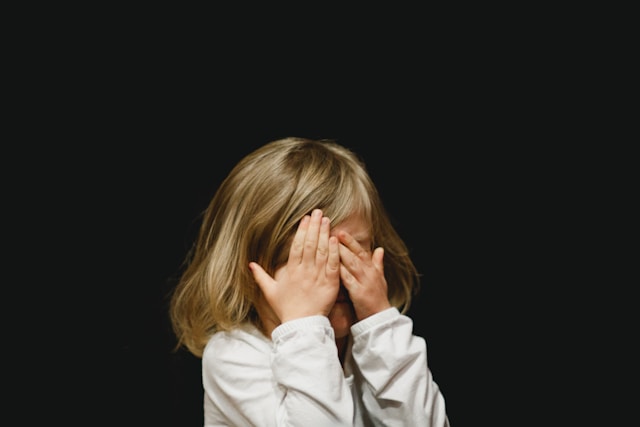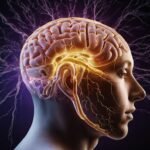
Mood disorders in children are often misunderstood and overlooked.
While it’s normal for kids to have occasional mood swings, consistent or severe mood changes could be a sign of a deeper issue.
According to the Journal of the American Academy of Child & Adolescent Psychiatry, an estimated 3-5% of children and adolescents experience mood disorders, which can significantly impact their daily lives if not addressed.
This article will explore the types of mood disorders found in children, their causes, symptoms, and ways to recognize and cope with these conditions.
Types of Mood Disorders in Children
Mood disorders in children are varied and can manifest differently depending on the child’s age, personality, and environment.
Here are the most common types:
Major Depressive Disorder (MDD)
Major Depressive Disorder (MDD) is characterized by persistent feelings of sadness, hopelessness, and a lack of interest in activities once enjoyed.
Unlike temporary sadness, MDD affects a child’s daily functioning, leading to difficulties at school, in relationships, and in overall well-being.
Signs and Symptoms:
- Persistent sadness or irritability
- Loss of interest in activities
- Fatigue and low energy
- Changes in appetite or weight
- Difficulty concentrating
- Feelings of worthlessness or guilt
- Thoughts of death or suicide
Children with MDD may show signs of irritability more than sadness, and they may struggle with physical complaints like stomach aches or headaches, which are often linked to emotional distress (Journal of Clinical Child & Adolescent Psychology).
Bipolar disorder
Bipolar Disorder in children involves extreme mood swings, ranging from manic (high energy, extreme happiness) episodes to depressive episodes.
These mood changes can be unpredictable and may cause significant challenges in a child’s daily life.
Signs and Symptoms:
- Extreme mood swings from high (mania) to low (depression)
- Hyperactivity, impulsivity, or risky behavior during manic episodes
- Sadness, fatigue, and low energy during depressive episodes
- Rapid speech or difficulty focusing
- Irritability or anger during mood episodes
Bipolar disorder in children may look different than in adults, as manic episodes can sometimes present as irritability or aggressive behavior rather than euphoria.
Persistent Depressive Disorder (Dysthymia)
Persistent Depressive Disorder, also known as dysthymia, is a long-term form of depression where a child experiences chronic, mild depression for an extended period—sometimes for years.
The symptoms are less severe than MDD but are ongoing and can still significantly impact a child’s quality of life.
Signs and Symptoms:
- Chronic sadness or irritability lasting for at least a year
- Low self-esteem and negative thinking
- Difficulty in making friends or interacting with peers
- Fatigue or lack of energy
- Changes in sleep patterns
- Poor academic performance

Causes of Mood Disorders in Children
Mood disorders in children are often influenced by a combination of biological, environmental, and psychological factors.
Understanding these causes can help in providing the right support and interventions.
Biological factors
Genetics
Children who have family members with mood disorders, such as major depressive disorder (MDD) or bipolar disorder, are more likely to develop similar issues themselves.
Research has shown that genetics can play a significant role in the onset of these disorders (source: Journal of Child Psychology and Psychiatry).
Brain chemistry
Mood disorders can also be linked to imbalances in neurotransmitters, the chemicals that help regulate mood in the brain.
When these chemicals don’t function properly, it can affect how children handle stress and manage their emotions, making them more susceptible to mood disorders.
Environmental factors
Stress
High levels of stress from various sources—like school pressures, family issues, or social situations—can trigger or worsen mood disorders.
Chronic stress can significantly impact a child’s mental health.
Trauma
Experiencing traumatic events, such as abuse or losing a loved one, can lead to long-term emotional struggles.
Children who go through such experiences may find it difficult to cope and are at a higher risk of developing mood disorders.
Family dysfunction
A child’s home environment is crucial for their mental health.
Issues like family conflicts, divorce, or an unstable home can deeply affect a child’s emotional well-being and increase the likelihood of mood disorders.
Psychological factors
Personality traits
Certain personality traits, such as being overly sensitive or having perfectionist tendencies, can heighten the risk of mood disorders.
These traits can influence how children view and react to stressors in their lives.
Coping mechanisms
Children who have not developed healthy coping skills are more vulnerable to mood disorders.
It’s important for them to learn how to manage stress and emotions effectively, as this can help protect their mental health.
Combination of factors
Mood disorders often arise from a combination of these factors.
For example, a child with a genetic predisposition may experience a traumatic event that triggers the onset of symptoms.
It’s essential to look at the whole picture when evaluating a child’s mental health, considering how these various factors interact with each other.

How to Recognize Mood Disorders in Children
Identifying mood disorders in children can be challenging, as symptoms often differ from those seen in adults.
However, certain signs may indicate that a child is struggling with a mood disorder:
Changes in behavior or mood
If a child suddenly becomes more irritable, aggressive, or sad, it could be a sign that something deeper is going on.
Keep an eye on these shifts, especially if they happen quickly or seem out of character for the child.
Difficulty coping with stress
Children should be able to handle everyday stressors, like school assignments or social situations.
If a child seems overwhelmed by things that others manage easily, it might indicate they’re struggling to manage their emotions.
Decline in academic performance
Mood disorders can affect a child’s ability to focus, stay motivated, and have enough energy for schoolwork.
If you notice a drop in their grades or a change in their attitude toward school, it could be related to their mood.
Social withdrawal
When a child starts to pull away from friends and activities they once enjoyed, it can be a red flag for depression or other mood disorders.
This withdrawal can make them feel even more isolated and worsen their emotional state.
Self-harm or suicidal thoughts
In severe cases, children might express thoughts of self-harm or suicide.
If a child talks about wanting to hurt themselves or seems extremely hopeless, it’s essential to seek immediate help.
These feelings are serious and require urgent attention from a professional.

Coping with Mood Disorders in Children
Managing mood disorders in children involves a combination of support, therapy, and sometimes medication.
Here are some strategies:
Psychotherapy
Cognitive Behavioral Therapy (CBT) is a powerful tool for helping children recognize and change negative thought patterns.
This type of therapy teaches children healthy ways to cope with their feelings and helps them learn how to manage their emotions more effectively.
Medication
In some situations, medication may be necessary to help balance brain chemistry.
Doctors might prescribe antidepressants or mood stabilizers.
It’s important that any medication is closely monitored by a healthcare professional to ensure it’s safe and effective for the child.
Family support
A caring and supportive family environment can greatly enhance a child’s recovery.
Families should work together to create a stable and nurturing home where everyone feels safe.
Encouraging open communication helps children express their feelings and concerns.
Healthy lifestyle
Promoting a healthy lifestyle can also have a positive impact on a child’s mood and overall mental health.
Encourage regular physical activity, a balanced diet, and a consistent sleep schedule.
These habits can improve mood and help children feel better both physically and emotionally.

Seeking Help for Mood Disorders in Children
If you think your child might be facing a mood disorder, it’s important to seek professional help.
Getting support early can stop the issue from getting worse and lead to better outcomes in the long run.
Pediatricians, psychologists, and psychiatrists can all play a role in your child’s care.
They will work together to create a personalized treatment plan that meets your child’s unique needs.
This collaborative approach ensures that your child receives the right support to help them feel better.
Final Thoughts
Mood disorders in children are serious conditions that require attention, understanding, and professional support.
By recognizing the signs, understanding the causes, and seeking appropriate help, parents and caregivers can make a significant difference in their child’s life.
It’s essential to approach these issues with empathy and an open mind, as early intervention is key to helping children manage their emotions and thrive.
FAQs
While mood disorders may not always be “cured,” they can be managed effectively with the right treatment, allowing children to lead healthy lives.
Yes, mood disorders are relatively common, affecting around 3-5% of children and adolescents, according to the Journal of the American Academy of Child & Adolescent Psychiatry.
It’s normal for children to experience occasional mood swings, but if the behavior is persistent, severe, or affects their daily life, it may be a sign of a mood disorder.
Treatment varies based on the individual and the type of mood disorder. It may include therapy, medication, or a combination of both, along with family support.


